Off
-
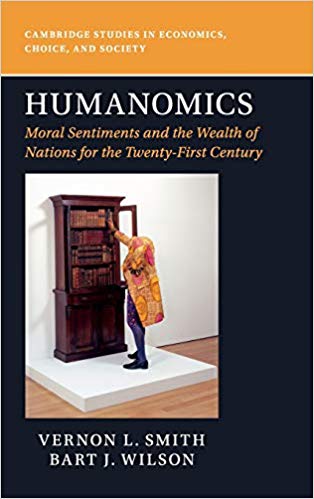 HumanomicsHumanomics: Moral Sentiments and the Wealth of Nations for the Twenty-First Century/ Cambridge University Press - 2019More »
HumanomicsHumanomics: Moral Sentiments and the Wealth of Nations for the Twenty-First Century/ Cambridge University Press - 2019More » -
 A Life of Experimental Economics 1A Life of Experimental Economics, Volume I: Forty Years of Discovery/ Palgrave Macmillan - 2018More »
A Life of Experimental Economics 1A Life of Experimental Economics, Volume I: Forty Years of Discovery/ Palgrave Macmillan - 2018More » -
 A Life of Experimental Economics 2A Life of Experimental Economics, Volume II: The Next Fifty Years/ Palgrave Macmillan - 2018More »
A Life of Experimental Economics 2A Life of Experimental Economics, Volume II: The Next Fifty Years/ Palgrave Macmillan - 2018More » -
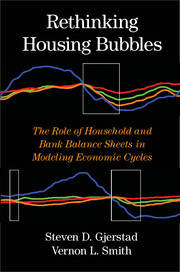 Rethinking Housing BubblesCambridge University Press - 2014More »
Rethinking Housing BubblesCambridge University Press - 2014More » -
 Discovery – A MemoirAuthorHouse – 2008More »
Discovery – A MemoirAuthorHouse – 2008More » -
 Handbook of Experimental EconomicsHandbook of Experimental Economics Results, Volume 1/ North-Holland/Elsevier – 2008More »
Handbook of Experimental EconomicsHandbook of Experimental Economics Results, Volume 1/ North-Holland/Elsevier – 2008More » -
 Rationality in EconomicsRationality in Economics: Constructivist and Ecological Forms/ Cambridge University Press – 2007More »
Rationality in EconomicsRationality in Economics: Constructivist and Ecological Forms/ Cambridge University Press – 2007More »
-
Research & Graduate Education
- About Our Office
- Staff
- Newsletters
- Events
- Sponsored Projects Services
- Research Integrity
- Industry Alliances & Commercialization
- Institutes and Centers
- Graduate Education
- Center for Undergraduate Excellence
- Internal Funding Opportunities
- Policies and Guidance
- Statistical Consulting
- Ask the Experts Virtual Town Hall
- Resources
- Quarterly Research Data
» Vernon L. Smith's Featured Books
Toggle Section
Coming soon
ADAM SMITH’S THEORY OF SOCIETY: The Rules that Have Created Better Societies Did So by Creating Better Lives published by Palgrave MacMillan Nature (coming soon).
Economics of Markets Neoclassical Theory, Experiments, and Theory of Classical Price Discovery
This book establishes that neoclassical economics based on the marginal utility calculus failed to derive a theory of consumer market price discovery consistent with the experimental market evidence. Such markets involve inherently discrete final-demand items bought for consumption and not subject to resale. Classical economists following Adam Smith articulated a rich narrative of price discovery theory consistent with experimental evidence based on operational concepts of discrete demand values (maximum willingness-to-pay), and symmetrically, supply costs (minimum willingness-to-accept). We develop and extend a mathematical model of classical market price formation. Chapter 1 & 2 describes this theme and chapter 3 connects it with experiments. Chapter 4 builds on experimental examples for an intuitive overview of the theory. A partial equilibrium version of the theory constitutes Chapter 5. Chapter 6 extends this framework to price formation by wealth constrained agents in multiple-goods markets. Chapter 7 applies this framework to the study of re-tradable durable-goods and financial claims that are subject to sources of instability absent in markets for consumer non-durables.
Humanomics: Moral Sentiments and the Wealth of Nations for the Twenty-First Century
Cambridge University Press - 2019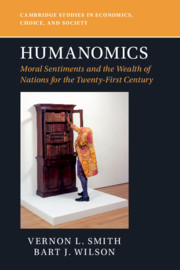
While neoclassical analysis works well for studying impersonal exchange in markets, it fails to explain why people conduct themselves the way they do in their personal relationships with family, neighbors, and friends. In Humanomics, Nobel Prize-winning economist Vernon L. Smith and his long-time co-author Bart J. Wilson bring their study of economics full circle by returning to the founder of modern economics, Adam Smith. Sometime in the last 250 years, economists lost sight of the full range of human feeling, thinking, and knowing in everyday life. Smith and Wilson show how Adam Smith's model of sociality can re-humanize twenty-first century economics by undergirding it with sentiments, fellow feeling, and a sense of propriety - the stuff of which human relationships are built. Integrating insights from The Theory of Moral Sentiments and the Wealth of Nations into contemporary empirical analysis, this book shapes economic betterment as a science of human beings.
A Life of Experimental Economics, Volume II: The Next Fifty Years
This sequel to A Life of Experimental Economics, Volume I, continues the intimate history of Vernon Smith’s personal and professional maturation after a dozen years at Purdue. The scene now shifts to twenty-six transformative years at the University of Arizona, then to George Mason University, and his recognition by the Nobel Prize Committee in 2002. The book ends with his most recent decade at Chapman University.
At Arizona Vernon and his students studied asset trading markets and learned how wrong it had been to suppose that price bubbles could not occur where markets were full-information transparent. Their work in computerization of the lab facilitated very complex supply and demand experiments in natural gas pipeline, communication and electricity markets that paved the way for implementing, through decentralized market processes, the liberalization of industries traditionally believed to be “natural” monopolies. The “Smart Computer Assisted Market” was born. Smith’s move to George Mason University greatly facilitated government and industry work in tandem with various public and private entities, whereas his relocation to Chapman University coincided with the Great Recession, whose similarity with the Depression was evident in his research. There he integrated two fundamental kinds of markets with laboratory experiments: Consumer non-durables, the supply and demand for which was stable in the lab and in the economy, and durable assets whose bubble tendencies made them unstable in the lab as well as in the economy—witness the great housing-mortgage market bubble run-up of 1997-2007.
This book’s conversational style and emphasis on the backstory of published research accomplishments allows readers an exclusive peak into how and why economists pursue their work. It’s a must-read for those interested in experimental economics, the housing crisis, and economic history.
A Life of Experimental Economics, Volume I: Forty Years of Discovery
This book provides an intimate history of Nobel Laureate Vernon Smith’s early life, combining elements of biography, history, economics and philosophy to show how crucial incidents early in his life provided the necessary framework for his research into experimental economics. Smith takes the reader from his family roots on the railroads and oil fields of Middle America to his early life on a farm in Depression-wracked Kansas. A mediocre student in high school, Smith attended Friends University, on Wichita’s west side, where an intense study of mathematics, physics, chemistry, and astronomy enabled him to pass the examinations to enter Caltech and study under luminary scientists like Linus Pauling. Eventually Smith discovered economics and pursued graduate study in the field at University of Kansas and Harvard. This volume ends with his Camelot years at Purdue, where he began his famous work in experimental economics, nurturing his research into an unlikely new field of economics.
Rethinking Housing Bubbles
Cambridge University Press - 2014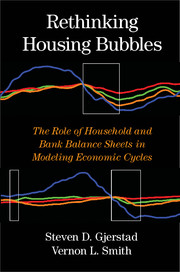
Balance sheet crises, in which the prices of widely held and highly leveraged assets collapse, pose distinctive economic challenges. An understanding of their causes and consequences is only recently developing, and there is no agreement on effective policy responses. From backgrounds in experimental economics, Steven Gjerstad and Nobel laureate Vernon L. Smith examine events that led to and resulted from the recent U.S. housing bubble and collapse, as a case study in the formation and propagation of balance sheet crises. They then examine all previous downturns in the U.S. economy, including the Great Depression, and document substantive differences between the recurrent features of economic cycles and financial crises and the beliefs that public officials hold about them, especially within the Federal Reserve System. They conclude with an examination of similar events in other countries and assess alternative strategies to contain financial crises and to recover from them.
Discovery – A Memoir
Discovery enters one child's homeland of hardship transformed by promise, where the obscure failed to mask a richly inspiring world of accomplishment. The power of that small world shaped this child's aspiration for knowledge beyond any presumed societal limitations.
Vernon Smith, born in Wichita before the Great Depression amidst entrepreneurs, saw them defy that Depression, converting Kansas wheat fields into oil and aviation industries. Unemployment would force his family into temporary farm life, where he began public school in a rural one-room school house. The farm would be a crucible of learning that would generalize far beyond its constraining bounds.
With nineteenth century blue-collar family roots in the railroad and petroleum industries, Smith swept past an unpromising academic high school record, graduating from Caltech, and then, devoid of any conscience vision of what might be accomplished; he switched from science to the study of economics at the University of Kansas and Harvard.
Guided by an inner sense of "knowing what to do next," the young Purdue professor withstood the pressure of the economics profession to stick within its artificial boundaries. Unbeknownst or imagined to himself, Smith would become instrumental in launching economics into new space as an experimental science, overcoming the arch-conservative view that economics was inherently a non-experimental social science.
His half-century of contributions were recognized in 2002 by the award of a Nobel Prize in economics. That capstone, however, is not the main message in this memoir. In Discovery you will learn about that intellectual journey, but mostly you will penetrate his personal voyage, learning about the inner workings of one mind, whether it's on horse back trips, making chili or probing the depths of human experience. Ultimately, learning "how things work" embraced spiritual as well as scientific values as both arise from unseen depths beyond immediate experience.
Handbook of Experimental Economics Results, Volume 1
Experimental methods in economics respond to circumstances that are not completely dictated by accepted theory or outstanding problems. While the field of economics makes sharp distinctions and produces precise theory, the work of experimental economics sometimes appear blurred and may produce results that vary from strong support to little or partial support of the relevant theory.
At a recent conference, a question was asked about where experimental methods might be more useful than field methods. Although many cannot be answered by experimental methods, there are questions that can only be answered by experiments. Much of the progress of experimental methods involves the posing of old or new questions in a way that experimental methods can be applied.
The title of the book reflects the spirit of adventure that experimentalists share and focuses on experiments in general rather than forcing an organization into traditional categories that do not fit. The emphasis reflects the fact that the results do not necessarily demonstrate a consistent theme, but instead reflect bits and pieces of progress as opportunities to pose questions become recognized.
This book is a result of an invitation sent from the editors to a broad range of experimenters asking them to write brief notes describing specific experimental results. The challenge was to produce pictures and tables that were self-contained so the reader could understand quickly the essential nature of the experiments and the results.
Rationality in Economics: Constructivist and Ecological Forms
 Cambridge University Press – 2007
Cambridge University Press – 2007
The principal findings of experimental economics are that impersonal exchange in markets converges in repeated interaction to the equilibrium states implied by economic theory, under information conditions far weaker than specified in the theory. In personal, social, and economic exchange, as studied in two-person games, cooperation exceeds the prediction of traditional game theory. This book relates these two findings to field studies and applications and integrates them with the main themes of the Scottish Enlightenment and with the thoughts of F.A. Hayek.
Amazon.com Reviews for Rationality in Economics:
Unique Insights Plus an Enjoyable Read
I read a lot of books about economics. Until reading Rationality in Economics, I had not read an economics book that gave me precisely what I want: (1) genuine insights on a wide range of important issues, (2) a feel for the key contributions in the academic literature with a minimum of technical detail, and (3) a writing style that explains so much in straightforward language that reading the book becomes a uniquely enjoyable learning experience. So, if you want to share that experience, read Rationality in Economics by the Nobel prize winning economist Vernon Smith. A major theme is the interplay between constructivist rationality (logical thinking) and ecological rationality (selection over time of what works best that results in our cultural and biological heritage). Gaining an appreciation for these two types of rationality illuminates the work of Adam Smith and Friedrich Hayek and also provides a healthy skepticism of "fix the economy" proposals from Washington. Wealth creation through specialization, innovation, and trade that meet existing needs and create new needs is facilitated by markets. Important to understand how markets work, right? Vernon's Nobel prize was awarded for his pioneering contribution to experimental economics that uses laboratory experiments to test hypotheses about how markets function—the behavior of participants and the institutional rules of the game. This book is a beautiful summary of experimental economics. Along the way, we learn about smart ways to deregulate markets guided by laboratory experiments (what California politicians failed to do when they deregulated a portion of that state's electricity market). We learn how to think about market efficiency and the apparent conflicting view of behavioral anomalies. We learn about how decision making relates to the way in which our brains have evolved (neuroeconomics). Perhaps you have felt uneasy about the widely-touted superiority of Bayesian decision making and related handling of probabilities. The "Psychology and Markets" chapter contains an elegant explanation of why you should be critical (hint: surprises are important). The "Rationality in Science" chapter addresses the age-old dilemma of how we know what we think we know. Vernon's answer is an absolute treasure that everyone should read and ponder. These brief highlights give some indication of why Rationality in Economics is the most useful economics book that I have read. —Bartley J. Madden
Since the death of Adam Smith, mainstream economic theory forgot that it should describe the real world. Instead, its models focused either on perfectly "rational" economic agents possessing "perfect" information or on agents with "bounded" rationality making predictable errors in judgment. Its axioms became a matter of ideology and unproven beliefs about human nature and human action, not of rigorous scientific inquiry. This book brings economics back to life. It demonstrates how important questions about human decision-making, markets, and public policy can be explored objectively in the laboratory. I highly recommend this book to students, managers, policy-makers, and anyone interested in exploring human economic behavior. —R.V.
Other Recent Publications
- "Method in Experiment: Rhetoric and Reality." Experimental Economics, 5(2), 2002, 91-110.
- Vernon Smith’s Papers and Publications can be found Chapman University's Digital Commons: Economic Science Institute Collections
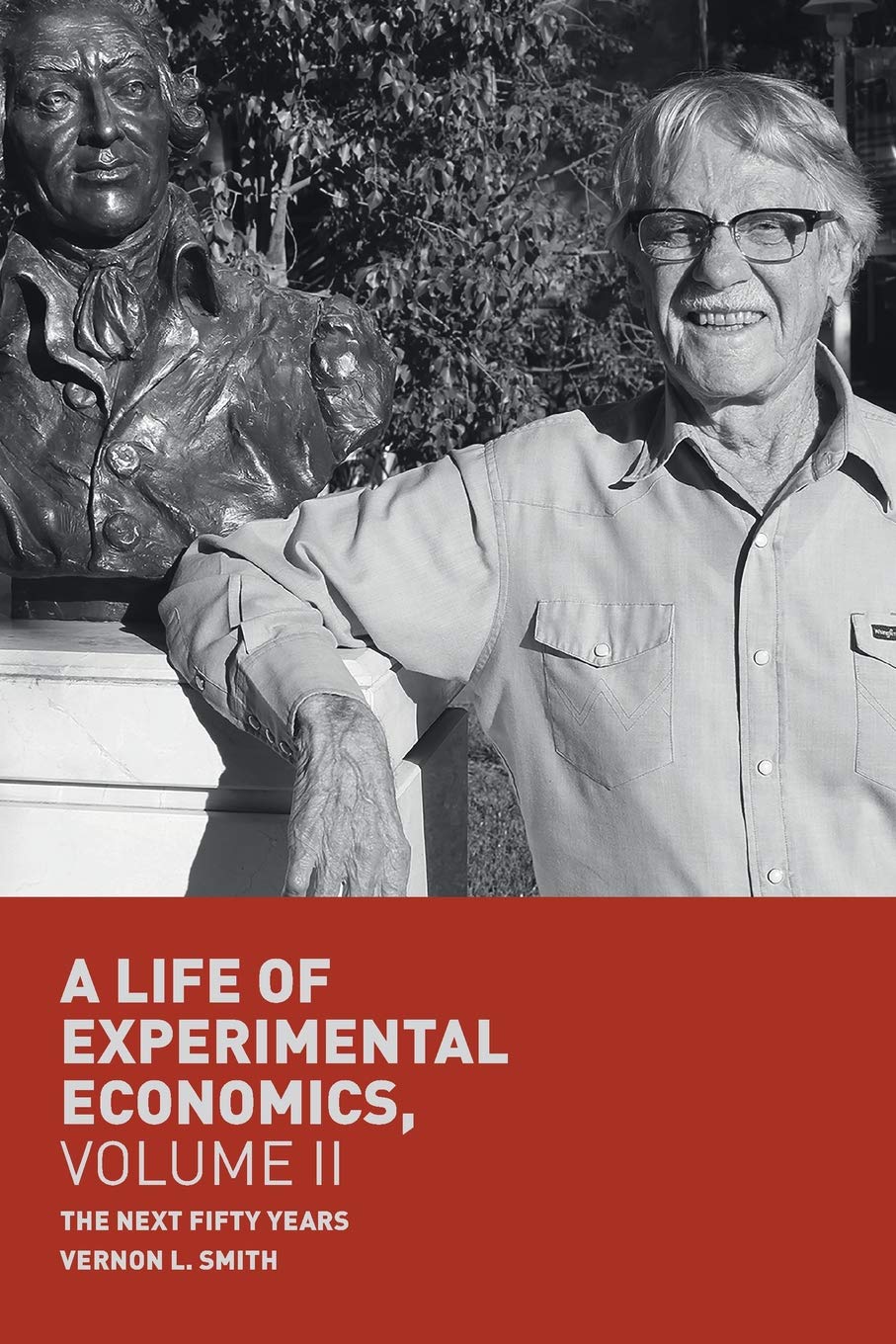
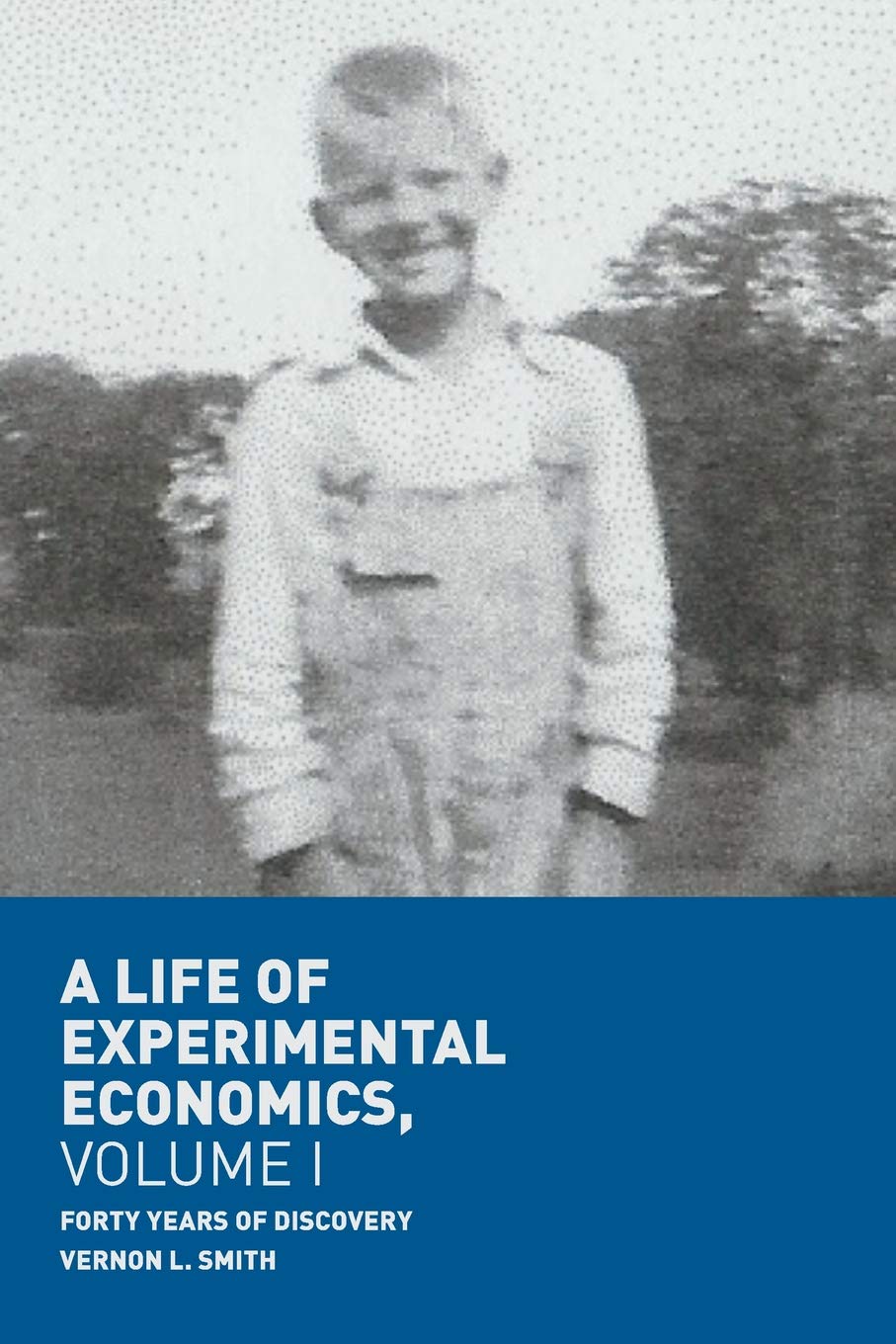
 AuthorHouse – 2008
AuthorHouse – 2008